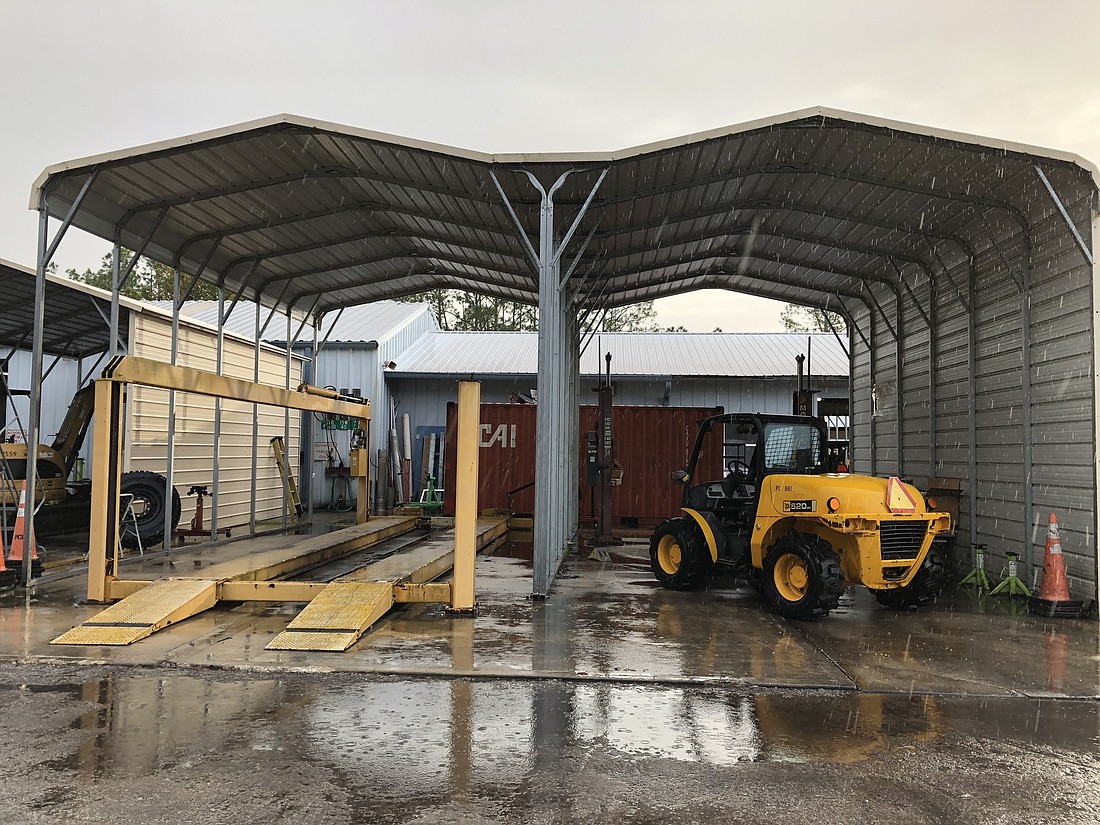- December 15, 2025

Palm Coast officials believe the city needs a new public works facility, and building one is expected to cost $21.5 million and take 30-42 months.
“It’s a facility that’s well beyond its current capacity ... and we’re continuing to grow,” Palm Coast Construction Manager Carl Cote said.
"It's a facility that's well beyond its current capacity ... and we’re continuing to grow."
— CARL COTE, city of Palm Coast construction manager
What’s less certain is how the city will pay for it.
City staff has suggested that the city implement a fee that would be added to residents’ power bills — either a 6% electric franchise fee, or up to a 10% public service tax, or some combination of the two.
Combining either option with debt funding would let the city complete the new public works facility in fiscal year 2021, according to a city staff presentation at the City Council’s Oct. 9 meeting.
If the city instead uses a pay-as-you-go approach, a 10% electric public service tax would let the city build the facility by 2023; a 7% electric public service tax would bring in enough money to finish it by 2028, and a 6% electric franchise fee would mean waiting until 2029 for completion.
But the facility, interim city Manager Beau Falgout said, isn’t one the city can afford to wait on for years and years.
Explaining the need for a new facility to the council, Falgout said that much of what makes Palm Coast distinctive — “all the pretty stuff,” like its landscaped medians — is done by the Public Works department.
Public Works’ parks and beautification division also maintains the city’s athletic fields. Its stormwater division handles swales, ditches and canal maintenance; its streets division deals with traffic signals, signs, potholes and patches and its facilities division handles all city government facilities.
Public Works also maintains more than 1,380 city-owned vehicles, 352 pieces of heavy equipment and 700 handheld tools.
Meanwhile, Falgout said, the facility, which sits on Wellfield Grade off U.S. 1, is a safety hazard for the city’s workers.
“Probably the only code-compliant building is the trailer,” he said. “That’s the safest structure on the property.” The other buildings are simple “pole barns” that don’t require permitting.
Council members had toured the facility that morning before the 9 a.m. council workshop.
“Certainly this morning we saw the men and women working outdoors under very serious safety conditions,” Mayor Milissa Holland said at the workshop. And, she added, “These are individuals who are out in the field every day, and do not have adequate restrooms and locker room facilities.” She said she found that unacceptable.
"There are a lot of serious safety issues that are a concern."
— MILISSA HOLLAND, Palm Coast mayor
Staff members also didn’t have enough parking space, and have been parking on the entry road.
Cote said there had been no major improvements to the facility since the city acquired it from the county when the city was incorporated in 1999.
Last year, Palm Coast contracted with an engineering firm, the Jacksonville-based Bergmann Associates, to produce a conceptual maser plan of a replacement public works facility.
Holland said she wanted the new facility to be energy-efficient, with a low operational cost. Perhaps it could have plug-in stations for energy-efficient vehicles, she suggested.
“It’s coming and it’s happening, and if we’ re going to make a significant investment to rebuild our facility, I want to do it right,” she said.
For funding, she said, she liked the idea of generating a new city revenue stream aside from property taxes: The city’s auditors have said every year, she said, that the city needs alternative revenue sources.
But she was wary of locking the city into a 30-year-contract with FPL in order to implement an electric franchise fee — especially since the city has no way of knowing how much energy production and sources might change over the course of 30 years.
Councilman Bob Cuff also had concerns about how an extra charge on electric bills might affect residents who are already struggling financially.
On a 1,000 kWh bill, the 6% electric franchise fee would add an additional $5.94, while the 7% public service electric tax levy option would add $5.67 and a 10% public service electric tax levy would add $8.10.
Cuff asked if any portion of a residents’ electric bill could be excluded from the new fee. Falgout said the city could exempt the first 500 kilowatts of usage, an option that Holland and Councilman Nick Klufas also favored.
Both Cuff and Lyon agreed that the city needs a new facility.
“We need to move to something that is not just cobbled together,” Lyon said. “The fact of the matter is, the city’s grown.”
Holland said she would like to see a “matrix of options” for the facility and its funding before making a decision, and the council asked staff to draft ordinances for the proposed fees.
“These are decision points that are challenging and difficult. ... But it’s what we do,” Holland said.